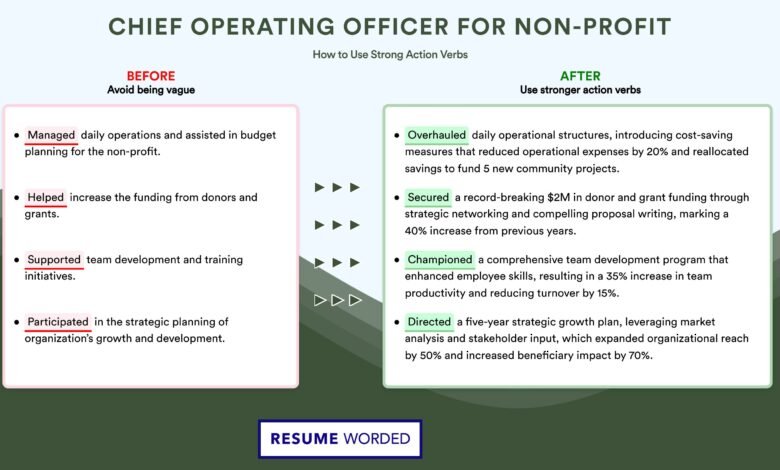10 Essential Responsibilities of a Chief Operating Officer (COO)

Explore the key responsibilities of a Chief Operating Officer (COO). Learn what makes COOs indispensable to businesses and how they drive organizational success.
Understanding the Role of a Chief Operating Officer (COO)
The Chief Operating Officer (COO) plays a pivotal role in ensuring the smooth operation and strategic direction of an organization. As one of the highest-ranking executives, the COO works closely with the CEO to execute business strategies, manage day-to-day operations, and drive organizational efficiency. In this article, we’ll break down the essential responsibilities and traits of a successful COO.
At its core, the role of a Chief Operating Officer is to bridge the gap between strategic vision and operational execution. Whether it’s optimizing processes, leading teams, or ensuring financial stability, a COO’s influence is felt across all aspects of a business.
Key Responsibilities of a COO
1. Developing and Implementing Business Strategies
A Chief Operating Officer is instrumental in translating the company’s strategic goals into actionable plans. They collaborate with the CEO and other executives to create strategies that align with the organization’s mission, vision, and long-term objectives.
Two key aspects of this responsibility include:
- Operational Planning: Designing detailed plans that outline steps to achieve business goals.
- Performance Monitoring: Ensuring that strategies are executed efficiently and effectively.
2. Overseeing Daily Operations
COOs are responsible for the day-to-day operations of the company. They ensure that every department functions seamlessly, fostering collaboration and productivity across teams. This includes managing:
- Supply chains and logistics.
- Production schedules.
- Customer service operations.
Balancing Efficiency and Innovation
To maintain a competitive edge, Chief Operating Officer must balance operational efficiency with innovation, ensuring the company adapts to market changes while staying productive.
3. Managing Financial Performance
Another critical duty of the COO is monitoring the organization’s financial health. They work closely with the CFO to:
- Analyze budgets and forecasts.
- Control operational costs.
- Ensure resources are allocated efficiently to meet financial goals.
4. Driving Organizational Change
In today’s fast-paced business environment, COOs play a crucial role in leading organizational change. Whether it’s adopting new technologies, restructuring teams, or entering new markets, they guide the company through transitions smoothly.
Building Resilience
A successful COO ensures that the organization can adapt to challenges and seize opportunities, fostering resilience in a constantly changing environment.
5. Building and Leading High-Performing Teams
COOs are exceptional leaders who build cohesive teams that work towards common goals. Their leadership involves:
- Recruiting and retaining top talent.
- Fostering a culture of accountability and collaboration.
- Mentoring and developing team members to maximize their potential.
6. Enhancing Customer Experience
The COO’s influence extends to improving the customer experience. They ensure that all operational aspects, from product delivery to customer service, meet or exceed customer expectations. This focus on customer satisfaction is crucial for long-term business success.
7. Ensuring Compliance and Risk Management
Chief Operating Officers are also tasked with maintaining regulatory compliance and mitigating risks. They establish policies and procedures to:
- Ensure adherence to industry standards.
- Minimize legal, financial, and operational risks.
- Promote ethical practices throughout the organization.
8. Collaborating with the CEO and Other Executives
As the right-hand person to the CEO, the COO provides valuable insights and support in decision-making. They collaborate with other executives to align departmental goals with the company’s overarching vision.
9. Monitoring Market Trends and Competitor Activity
To stay competitive, COOs keep a close eye on industry trends and competitor strategies. This enables the organization to:
- Identify emerging opportunities.
- Address potential threats.
- Adapt strategies to remain ahead in the market.
10. Ensuring Scalability and Growth
Lastly, a COO ensures that the company is prepared for growth. This involves scaling operations, optimizing processes, and building infrastructure that supports expansion without compromising quality or efficiency.
Traits of a Successful COO
Key Characteristics
- Strategic Thinker: The ability to see the big picture and align operations with long-term goals.
- Exceptional Communicator: Strong communication skills to bridge gaps between teams and leadership.
- Problem-Solver: A knack for identifying challenges and developing effective solutions.
- Resilient Leader: The ability to navigate high-pressure situations and lead with confidence.
Balancing Vision and Execution
A successful COO balances visionary thinking with meticulous execution, ensuring that strategies are not only ambitious but also achievable.
Final Thoughts on the Role of a COO
The Chief Operating Officer is a cornerstone of any successful organization. By overseeing daily operations, driving strategic initiatives, and fostering a culture of collaboration, COOs ensure that businesses run smoothly and achieve their goals.
Whether you aspire to become a COO or want to understand their impact on a company, recognizing their responsibilities and traits provides valuable insight into what makes this role indispensable.
Do you have any experiences or insights about the role of a COO? Share your thoughts in the comments below!



